
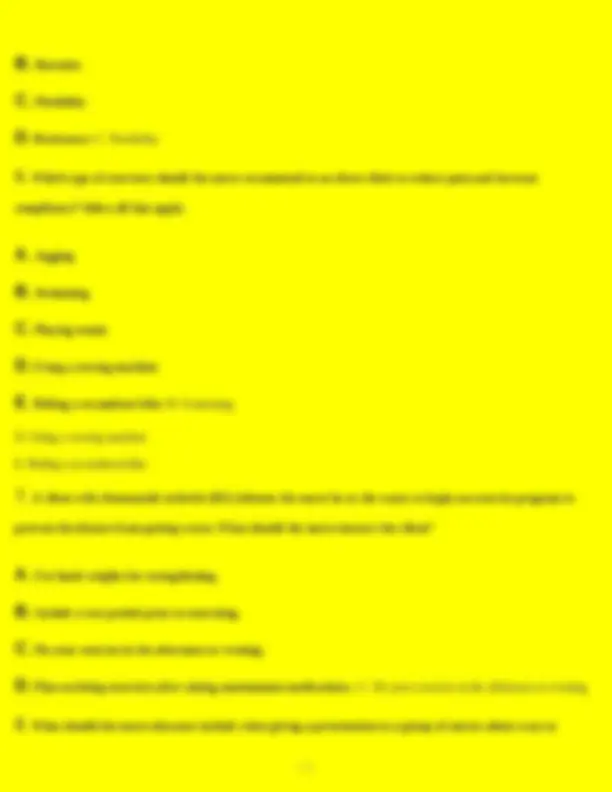
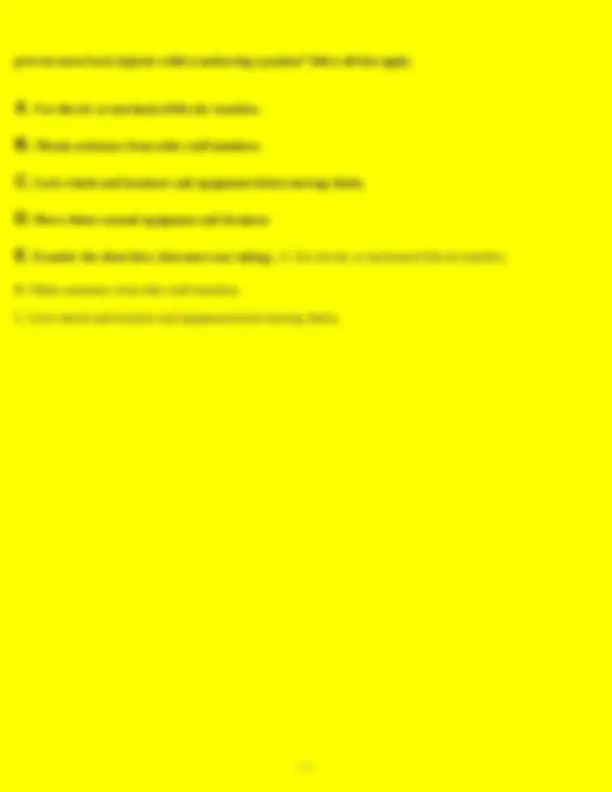
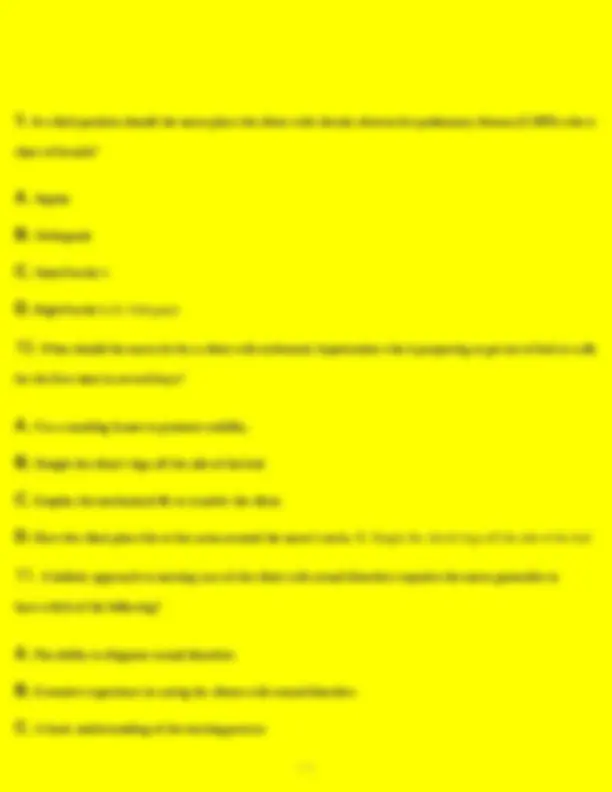
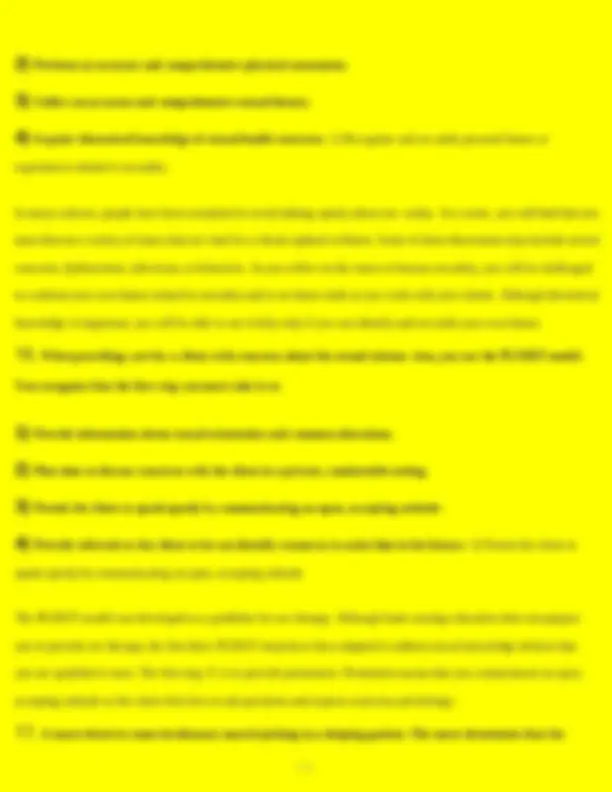
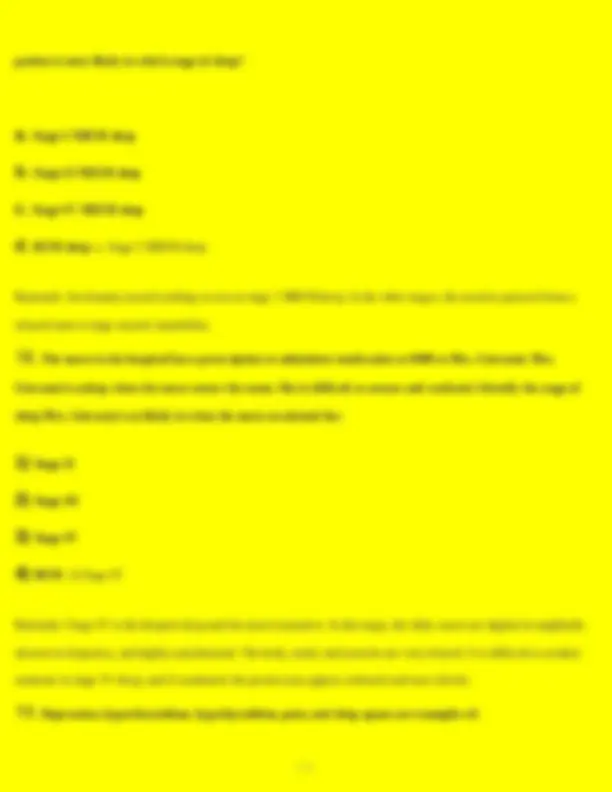
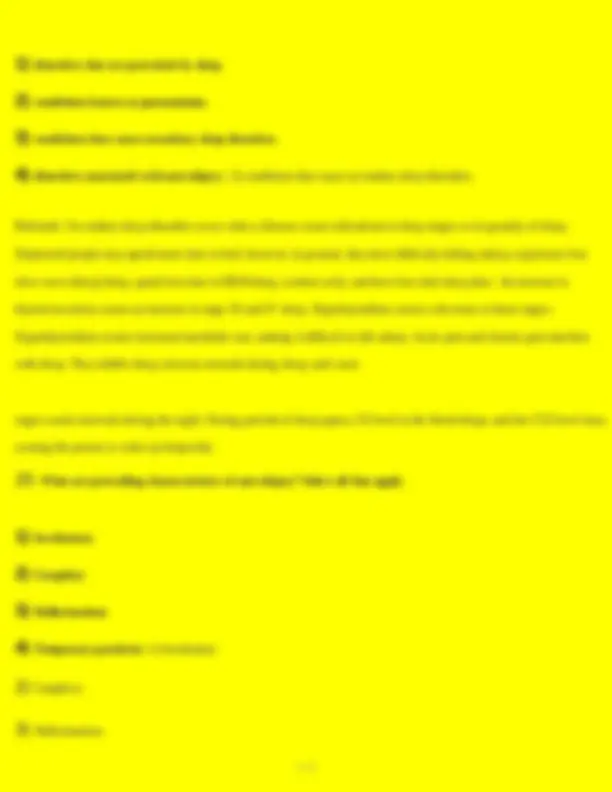
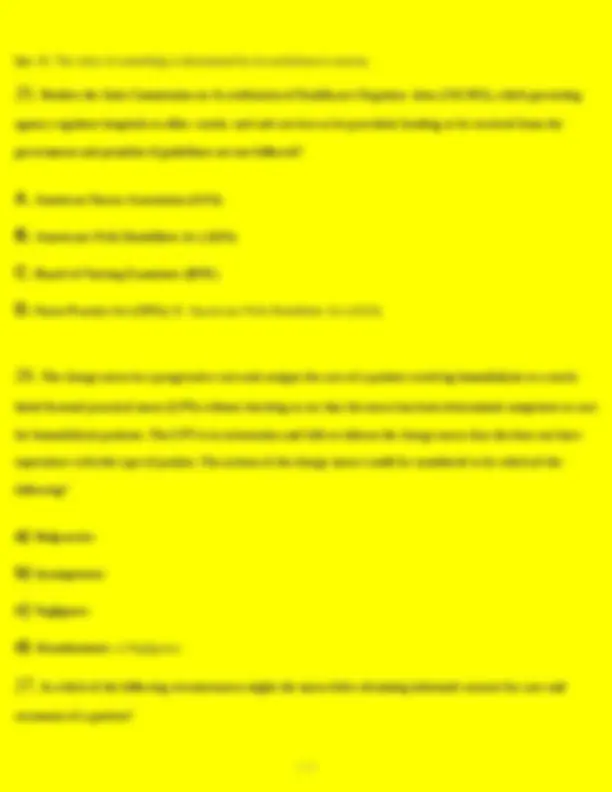
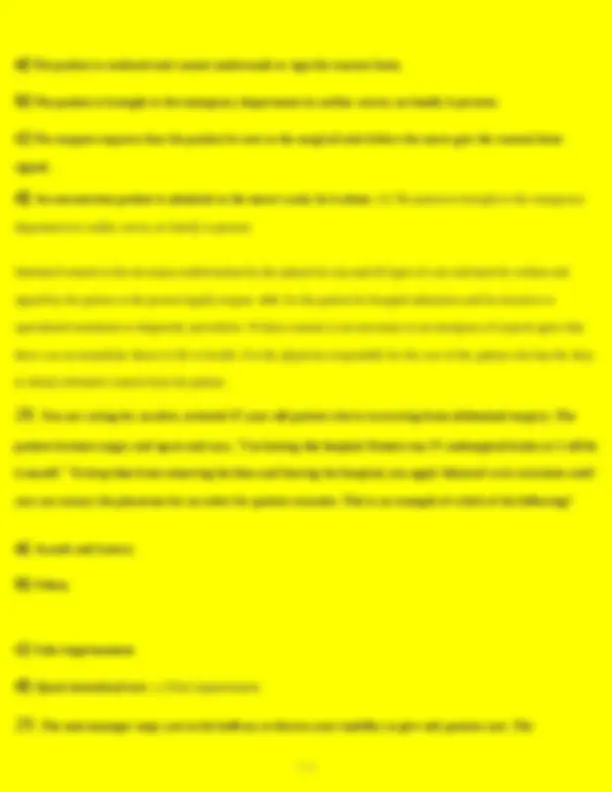
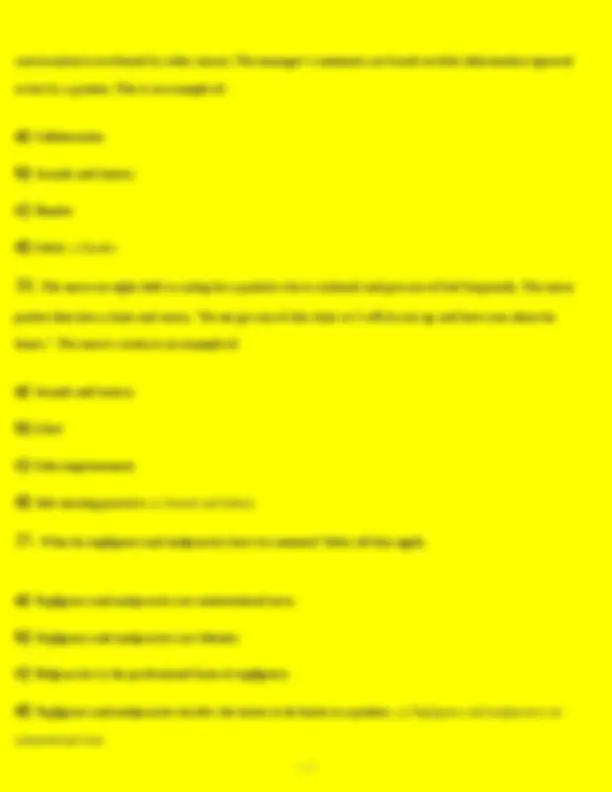
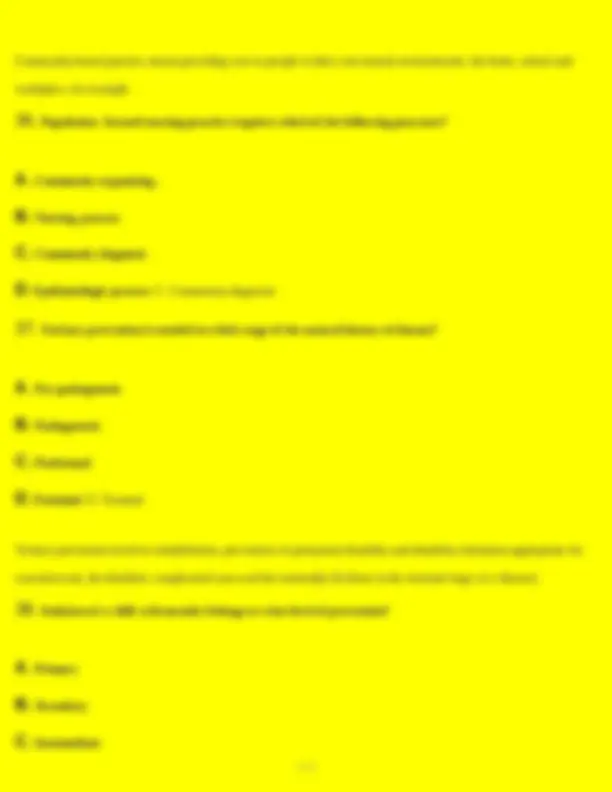
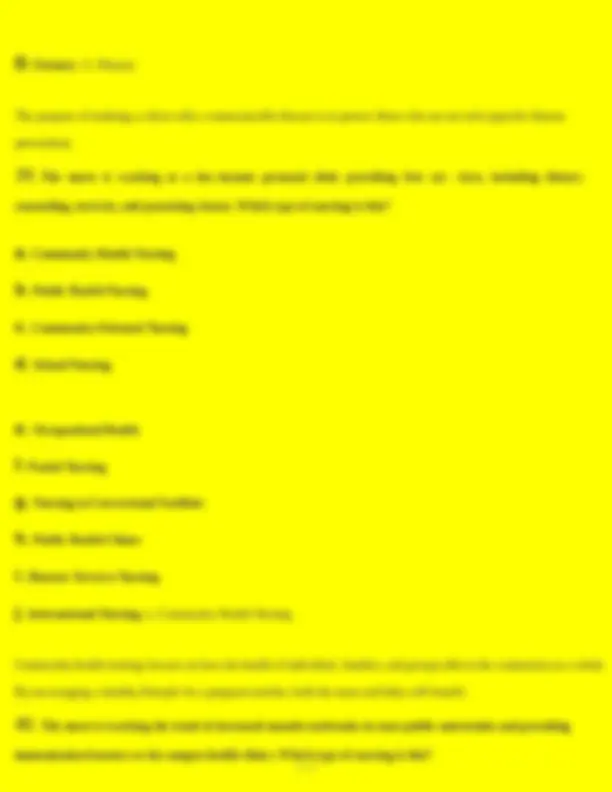
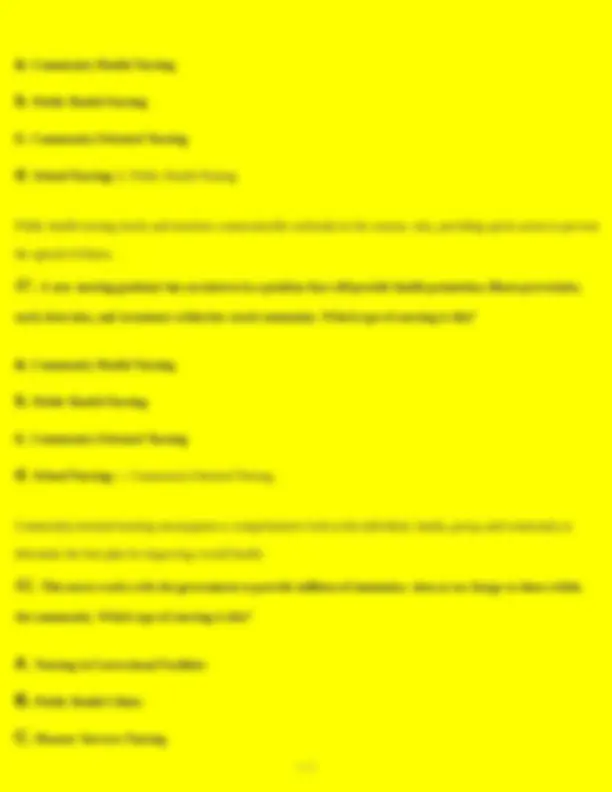
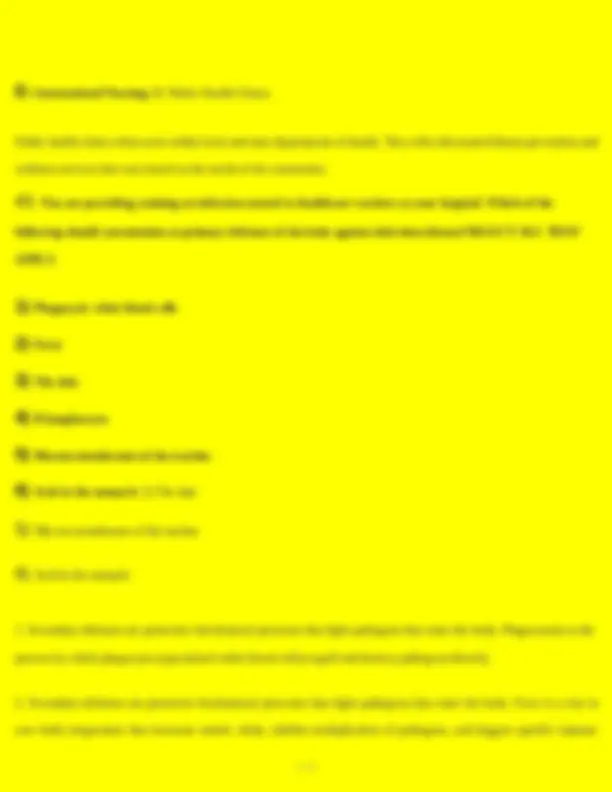
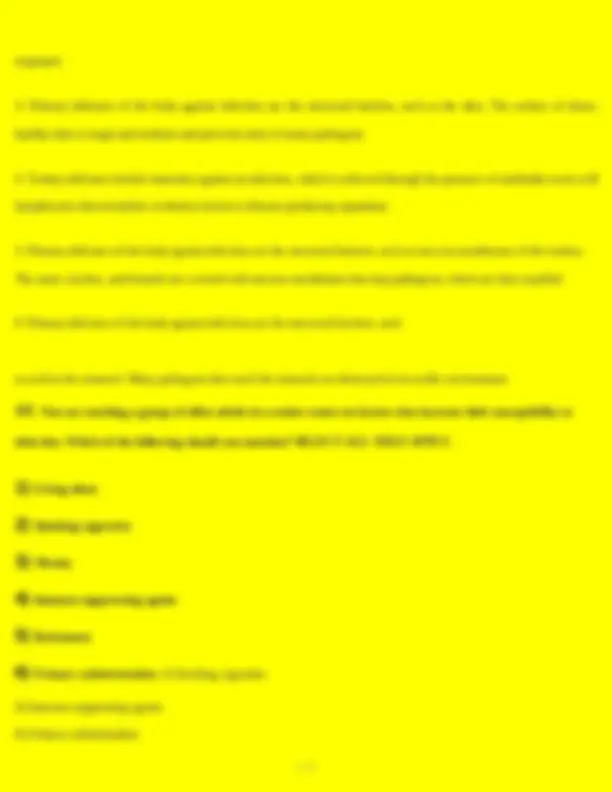
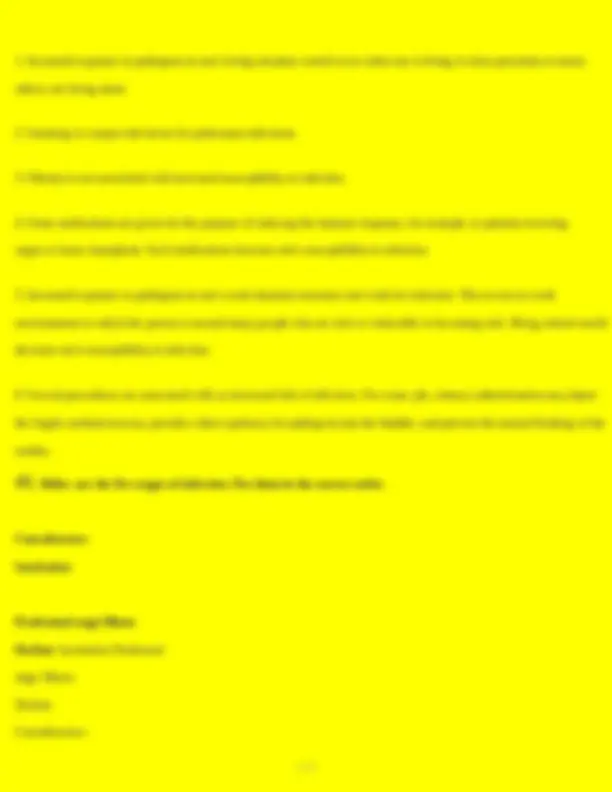
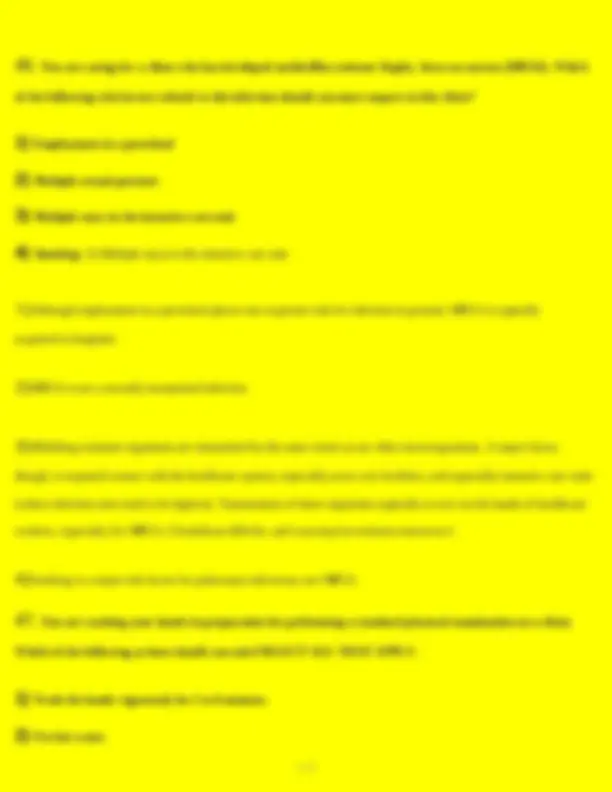
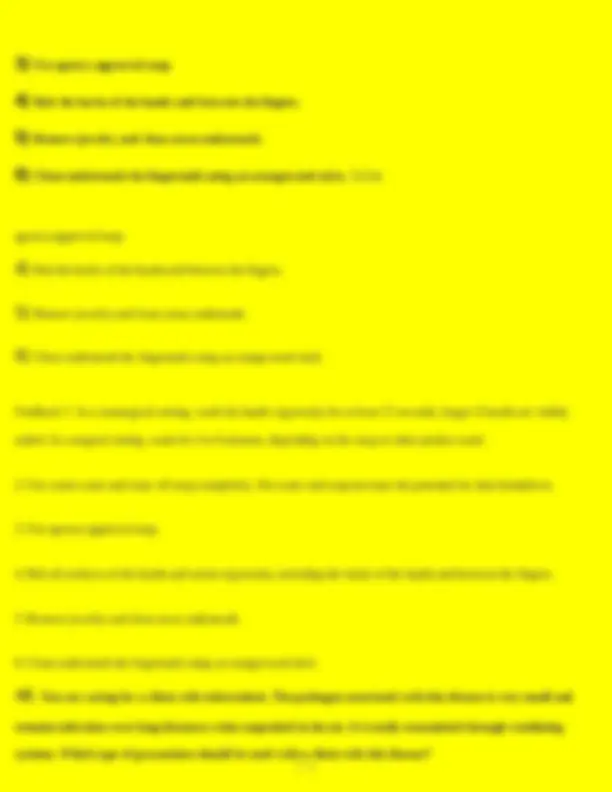
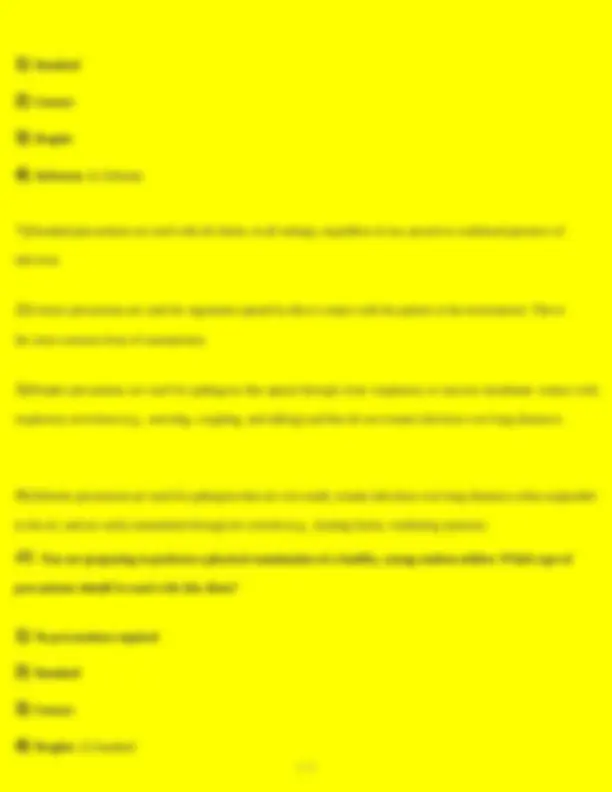
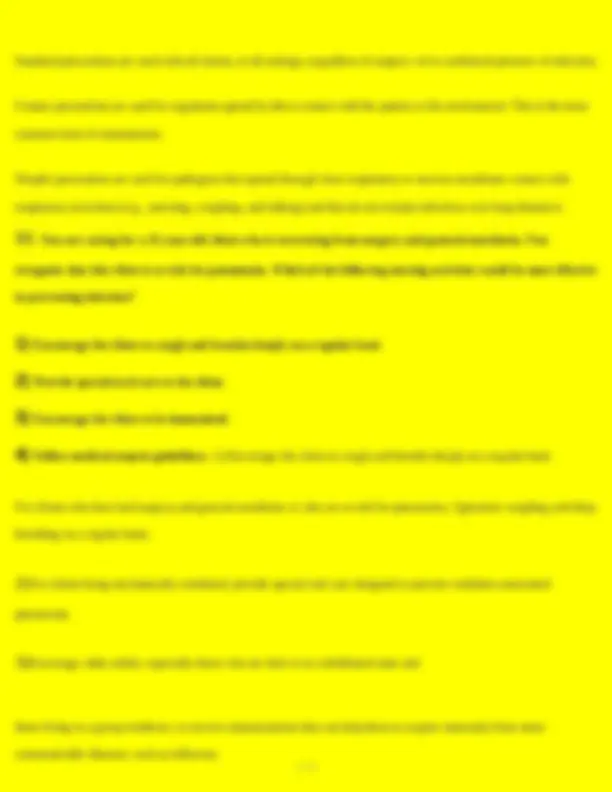
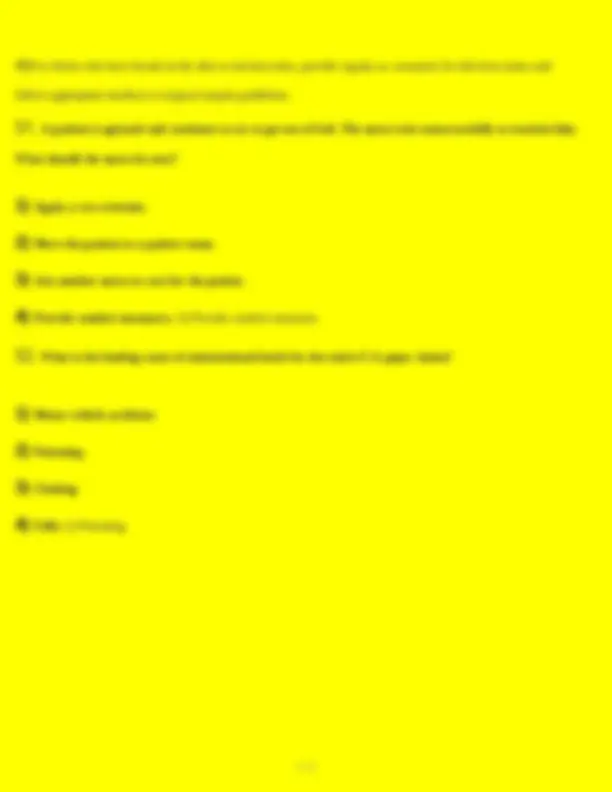


Study with the several resources on Docsity

Earn points by helping other students or get them with a premium plan


Prepare for your exams
Study with the several resources on Docsity

Earn points to download
Earn points by helping other students or get them with a premium plan
Community
Ask the community for help and clear up your study doubts
Discover the best universities in your country according to Docsity users
Free resources
Download our free guides on studying techniques, anxiety management strategies, and thesis advice from Docsity tutors
Nursing 100 Final Exam Questions with Complete Solution
Typology: Exams
1 / 28

This page cannot be seen from the preview
Don't miss anything!





















should be included in the session? Select all that apply.
C. Spread legs apart when lifting. D. Use thigh muscles when lifting.
program for an older client with arthritis?
balance
should the nurse include in the presentation? Select all that apply.
B. Coordination C. Joint mobility E. Body alignment
the nurse's best response?
strain?
prevent nurse back injuries while transferring a patient? Select all that apply.
B. Obtain assistance from other staff members. C. Lock wheels and furniture and equipment before moving clients.
short of breath?
for the first time in several days?
have which of the following?
Rationale: The nursing diagnosis Ineffective Sexuality Patterns in used when the patient expresses concerns about her own sexuality, whereas Sexual Dysfunction is used when there is an actual change in sexual function that the patient views as unsatisfying, unrewarding, or inadequate. In this situation, the patient still views herself as being committed to her deceased husband, causing a conflict in values.
most effective nursing intervention for a patient?
with a counselor. Rationale: Effective nursing interventions address the etiology of the identified nursing diagnoses. This patient is experiencing a values conflict. Therefore, interven- tions must address this concern rather than issues, such as fears and relationship problems. The partner might not be the most suitable person for the patient to talk to because she would be too close to the matter; a counselor is trained to discuss sexuality and values conflicts in a professional and objective manner.
important for a nurse to be able to:
experiences related to sexuality. In many cultures, people have been socialized to avoid talking openly about sex- uality. As a nurse, you will find that you must discuss a variety of issues that are vital for a clients optimal wellness. Some of these discussions may include sexual concerns, dysfunctions, infections, or behaviors. As you reflect on the issues of human sexuality, you will be challenged to confront your own biases related to sexuality and to set those aside as you work with your clients. Although theoretical knowledge is important, you will be able to use it fully only if you can identify and set aside your own biases.
You recognize that the first step you must take is to:
speak openly by communicating an open, accepting attitude. The PLISSIT model was developed as a guideline for sex therapy. Although basic nursing education does not prepare you to provide sex therapy, the first three PLISSIT steps have been adapted to address sexual knowledge deficits that you are qualified to treat. The first step, P, is to provide permission. Permission means that you communicate an open, accepting attitude so the client feels free to ask questions and express concerns and feelings.
Rationale: Secondary sleep disorders occur when a disease causes alterations in sleep stages or in quantity of sleep. Depressed people may spend more time in bed; however, in general, they have difficulty falling asleep, experience less slow-wave (deep) sleep, spend less time in REM sleep, awaken early, and have less total sleep time. An increase in thyroid secretion causes an increase in stage III and IV sleep. Hypothyroidism causes a decrease in those stages. Hyperthyroidism creates increased metabolic rate, making it difficult to fall asleep. Acute pain and chronic pain interfere with sleep. They inhibit sleep, increase arousals during sleep, and cause onger awake intervals during the night. During periods of sleep apnea, O2 level in the blood drops, and the CO2 level rises, causing the person to wake up frequently.
Rationale: The person with narcolepsy experiences a sudden, uncontrollable urge to sleep lasting from seconds to minutes, even though the person sleeps well at night. The person cannot avoid the "sleep attacks" but awakens easily. Narcolepsy is characterized by involuntary episodes of sleepiness, slurred speech, slackening of the facial muscles, a feeling of impending weakness of the knees, paralysis, and hallucinations. Some have other symptoms, such as cataplexy, a sudden loss of muscle tone usually triggered by an emotional event (e.g., laughter, surprise, or anger), but most only have hypersomnia
conduct that are written as the:
Rationale: This set of ethical principles provides the professional guidelines estab- lished by the ANA to maintain the highest standards for ideal conduct in practice. As a profession, the ANA wanted to establish rules and then incorporate guidelines for accountability and responsibility of each nurse within the practice setting.
far.: B. The value of something is determined by its usefulness to society.
agency regulates hospitals to allow contin- ued safe services to be provided, funding to be received from the government and penalties if guidelines are not followed?
hired licensed practical nurse (LPN) without checking to see that the nurse has been determined competent to care for hemodialysis patients. The LPN is in orientation and fails to inform the charge nurse that she does not have experience with this type of patient. The actions of the charge nurse would be considered to be which of the following?
treatment of a patient?
signed.
department in cardiac arrest; no family is present. Informed consent is the necessary authorization by the patient for any and all types of care and must be written and signed by the patient or the person legally respon- sible for the patient for hospital admission and for invasive or specialized treatments or diagnostic procedures. Written consent is not necessary in an emergency if experts agree that there was an immediate threat to life or health. It is the physician responsible for the care of the patient who has the duty to obtain informed consent from the patient.
patient becomes angry and upset and says, "I'm leaving this hospital. Remove my IV andsurgical drains or I will do it myself." To keep him from removing his lines and leaving the hospital, you apply bilateral wrist restraints until you can contact the physician for an order for patient restraint. This is an example of which of the following?
c) Malpractice is the professional form of negligence
tumor removed. Before the surgery, the patient signs a document giving instructions to hisfamily regarding the level and extent of life-prolonging treatments he desires. Which of the choices below describe this legal directive? Select all that apply.
c) The family can make decisions that are consistent with the document if the patient is incompetent. e) The family has guidance on the treatments the patient wants.
b) Breach of duty
prevention of
health
and children: B. To enhance the capacity of individuals, families and communities to cope with their health needs
: B. The nurse has to conduct community diagnosis to determine nursing needs and problems
The purpose of isolating a client with a communicable disease is to protect those who are not sick (specific disease prevention).
counseling, exercise, and parenting classes. Which type of nursing is this?
Community health nursing focuses on how the health of individual, families, and groups affects the community as a whole. By encouraging a healthy lifestyle for a pregnant mother, both the mom and baby will benefit.
immunization boosters to the campus health clinics. Which type of nursing is this?
Public health nursing tracks and monitors communicable outbreaks in the commu- nity, providing quick action to prevent the spread of illness.
early detection, and treatment within her rural community. Which type of nursing is this?
Community-oriented nursing encompasses a comprehensive look at the individual, family, group, and community to determine the best plan for improving overall health.
the community. Which type of nursing is this?